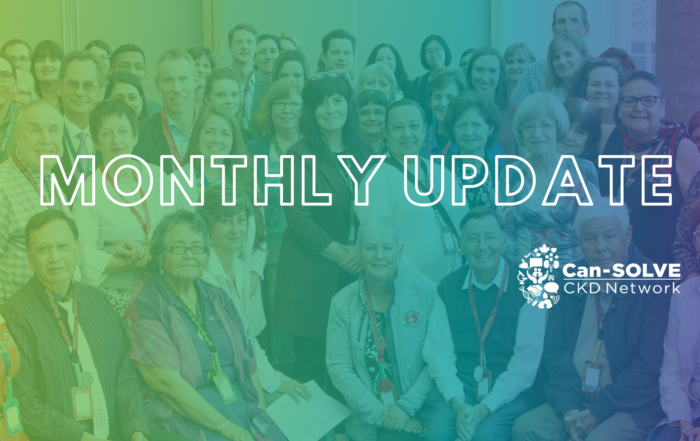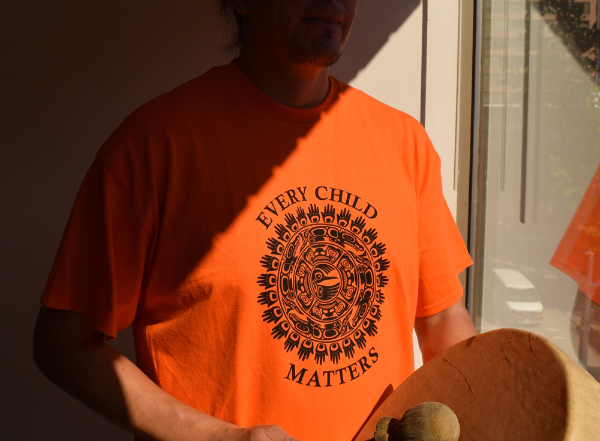By Leah Getchell – Can-SOLVE CKD’s Patient Partnerships and Training Lead
As Can-SOLVE CKD’s Patient Partnerships and Training Lead, I’ve learned a thing or two about fostering meaningful connections with others on a health research team. The core of successful patient engagement involves one simple principle: human connection. Human connection involves paying close attention to one another and making others feel seen and heard. Focusing your engagement strategies around this single principle creates a dynamic environment that fosters trust, creativity and meaning. Building connection and trust on a team takes time, but how do you take the first step? Here are a few tricks of the trade to help you embark on your own patient engagement journey…
Fun Facts
Sharing something interesting and personal opens the door for meaningful connection. I’ve definitely gained a reputation around our Can-SOLVE CKD network. If you’ve ever been in a meeting with me, I’m going to guess I’ve asked you to share a fun fact about yourself. I usually take the lead in this “fun fact” exercise to get the ball rolling. What happens next always amazes me—we go around our circle and people share a piece of information with the group. Usually, there are many chuckles, ‘hey me too’s’, and at minimum, smiles that weren’t there before. In the few minutes it takes to complete this exercise, important seeds have been planted. Seeds that will grow over time into a full bloom of trust and authentic partnership among patients and researchers. We’ve opened up and connected as regular people on an ‘even’ playing field. Our patient-oriented research begins.
While unorthodox, as far as traditional research meetings go, there is a method to the ‘fun fact madness’. What I’ve come to know over the past four years working in patient-oriented research is that trust is the cornerstone to a strong multidisciplinary team. Building trust takes time. Making the time to build this trust, even in small ways, will set your research team up for success.
Communication is Key
If there are extend periods of radio silence from the research team it can be interpreted as being explicit ‘disengagement’ leaving patient partners feeling frustrated. For example, even if there is no news to share, because you’re still waiting to hear back from your Research Ethics Board it’s still important to reach out to your patient partners to keep them in the loop. Quick check-ins over the phone or via email can go a long way in keeping the lines of communication open. This might also mean meeting outside of your time zone’s regular business hours. Not everyone can take calls during ‘business hours’ so flexibility about when to connect is key when a web or teleconference is required.
A few other lessons learned over the years—for researchers (and their teams):
- Even if you are completely unsure of what a patient might bring to the team, or where/how to have them participate—invite them to the table anyway! Being open and honest about your uncertainty can go a long way with people and can help to build trust…(can we see a theme here?!)
- Patient partners bring a breadth of experience to your team, in addition to their lived experience with kidney disease. There may be standards of excellence that exist in the private sector that can enhance health research (e.g. working to streamline multi-institutional contract agreements). You can rely on the expertise and professional backgrounds of your patient partners to help you navigate uncharted waters.
- Talk openly about when, how and where is it best to meet. If you are lucky enough to be in the same city as your patient partners, think of creative spaces where you can host meetings. Could meeting at a coffees shop be an option? Make a point to meet your patient partners where they are instead of always requesting that they come to you.
- Don’t hesitate to reach out and ask your patient partners for help—you are not bugging them! Patient partners are exercising their free will by signing up to be on your research team. Trust that they will do their best to meet your requests and give them the space to decline requests when they are unable to assist.
- Make a plan. Plan out where and when it makes the most sense to have your patient partners involved in your project timeline– and be strategic in how you can utilize their many skills.
All journeys begin with a single step. Using the tips described above can help you take the first step in fostering meaningful patient engagement on your research teams. Building trust on a research team takes time, but by leveraging small moments of openness and authenticity, you can build the foundation for a successful, and meaningful, long-term partnership.
Leah Getchell is the Patient Partnerships and Training Lead at the Can-SOLVE CKD Network. Follow her on Twitter and connect with her on LinkedIn.
For more on this topic, check out our conversation with Leah Getchell on Can-SOLVE CKD’s new podcast series, Kidney Research Conversations:



Connect with us